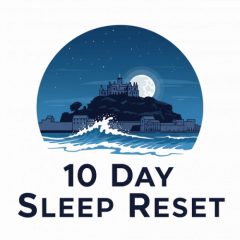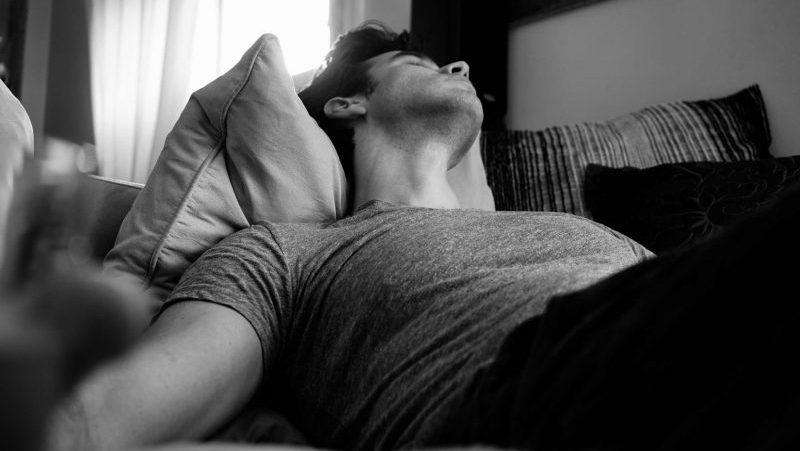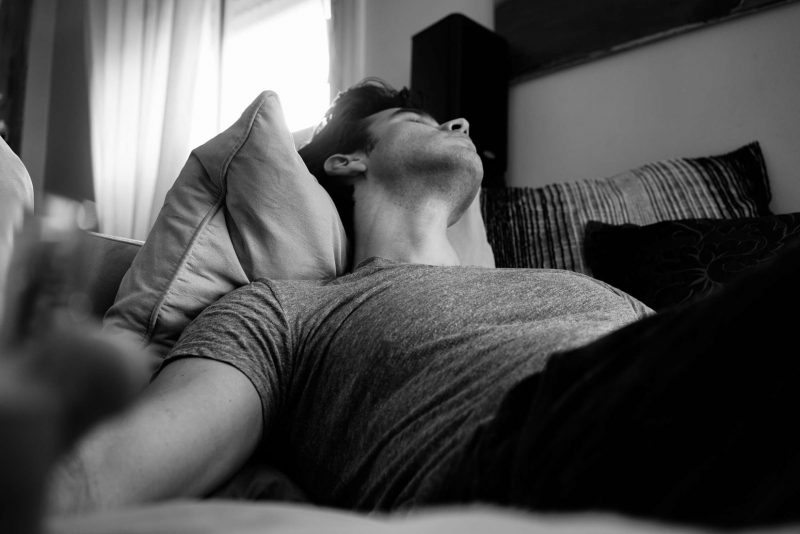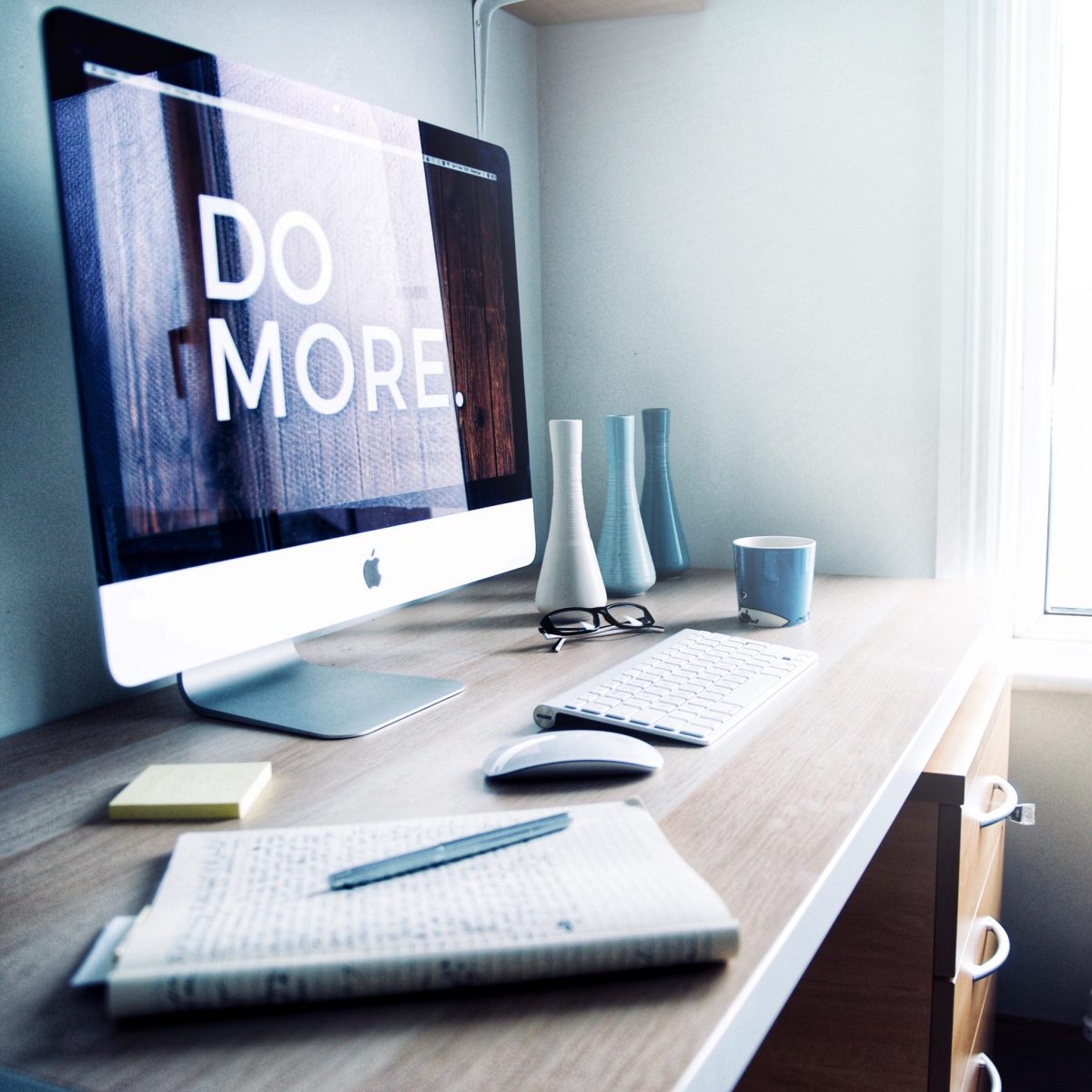
Introducing The 10 Day Sleep Reset: 10 Days to Naturally Better Sleep
If you’ve ever laid awake at night, mind racing, tension humming quietly through your body, or just felt disconnected from that natural, effortless sleep you used to have — you’re not alone.
Sleep doesn’t always come easily in today’s world. Many of my clients tell me the same thing: “I’m exhausted, but I just can’t switch off.” Whether it’s stress, anxiety, overstimulation, or the simple fact that our brains aren’t wired for our modern pace of life — falling asleep can become one more thing we try to do… and in trying, we get further from it.
That’s why I created The 10 Day Sleep Reset — a 10-day hypnotherapy audio programme inspired by the rugged calm and natural rhythms of Cornwall, designed to help you rediscover the art of sleep.
What is The Sleep Reset?
This is not a quick fix. It’s a reset — a gentle, immersive journey that gradually rewires your relationship with sleep over 10 carefully structured sessions. Each one lasts between 30–60 minutes and is designed to guide your mind and body into deep rest, helping you rebuild trust in your own natural ability to sleep.
Combining clinical hypnotherapy, soothing imagery, and evidence-based relaxation techniques, the audios are crafted to gradually reduce anxiety, deepen your relaxation response, and anchor new associations with bedtime: comfort, calm, and safety.
It’s a powerful standalone sleep aid — and it can also be a perfect first step for those who’ve never tried hypnotherapy before.
A Gentle Introduction to Hypnotherapy
If you’ve been curious about hypnotherapy but weren’t quite ready to book a session, this programme offers an easy way in.
You don’t need to commit to weekly appointments. You don’t need to lie on a couch or talk about your childhood. You just press play. Lie back. And begin to experience how hypnotherapy can feel — safe, soothing, natural.
Many people use The Sleep Reset as an affordable way to explore hypnotherapy before deciding whether to work with me 1-to-1. It’s yours to keep, and to revisit whenever you need it — whether you’re travelling, going through a stressful patch, or simply want to sleep better without medication.
Why Cornwall?
I’ve been a hypnotherapist in Cornwall for years, and I’ve always believed there’s something powerful about this landscape. The sea, the moors, the quiet coves — they have a rhythm that invites rest.
Throughout the programme, you’ll gently drift into these imagined Cornish spaces — never heavy-handed or touristy, but subtle and sensory. You’ll lie back on warm granite, watch mist drift across the clifftops, listen to the tide beyond a moonlit cove.
Each recording invites you to step out of the noise of your day and into a slower, more ancient pace — one where sleep feels natural again.
What You’ll Get
You’ll receive 10 professionally recorded audio sessions, each one themed to focus on a particular layer of rest and release:
Each one is carefully layered with hypnotic inductions, deepeners, and the kind of language techniques used in professional therapy — all designed to help you drift naturally into sleep. Also a quick start guide to get the best from the programme.
Who Is It For?
- You struggle to fall asleep or stay asleep
- You wake feeling tired, no matter how early you go to bed
- You’ve tried apps and podcasts, but they don’t quite reach you
- You’re curious about hypnotherapy but not ready to dive into sessions
- Or maybe… you’ve already done therapy and want something supportive and calming to maintain your progress
Whether you’re brand new to this or already familiar with hypnotherapy, The Sleep Reset is designed to meet you exactly where you are.
Final Thoughts
Sleep isn’t something we force. It’s something we return to — when we feel safe, soothed, and supported.
The Sleep Reset is my way of helping you reconnect with that part of yourself. Not through tricks or tech, but through rhythm, repetition, language, and the deeper parts of your mind that already know how to rest.
Whether it becomes your long-term sleep support or a gentle introduction to hypnotherapy, I hope it becomes something that helps.








